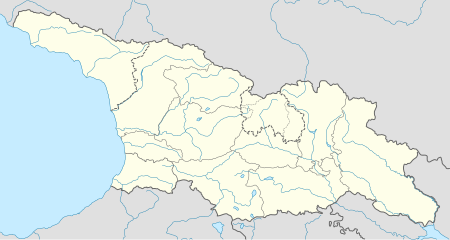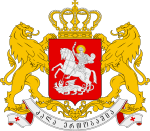Aspindza
Aspindza
ასპინძა | |
|---|---|
Borough | |
 | |
| Coordinates: 41°34′26″N 43°15′22″E / 41.57389°N 43.25611°E | |
| Country | |
| Region | Samtskhe-Javakheti |
| Borough from | 1961 |
| Elevation | 1,090 m (3,580 ft) |
| Population (2014)[1] | |
| • Total | 2,793 |
| Time zone | GMT+4 |
Aspindza (Georgian: ასპინძა) is a daba ("small town") in southern Georgia's region of Samtskhe-Javakheti with a population of 2,793 (2014 census), mostly ethnic Georgians.[2] It is located at around 41°34′26″N 43°15′22″E / 41.57389°N 43.25611°E.
History
The word "Aspindza" derives from a Persian word "اسب انداز", which means "a place to rest". The year of the foundation the town is considered to be 888, as Leonti Mroveli (Georgian: ლეონტი მროველი) tells -
The run away Nasra was caught near Samtskhe, and killed by Aspindza in the year 888
By the end of the 16th century Aspindza had been conquered by the Ottoman Turks. According to their census, "Aspindza was a big village, that consisted of 50 families with gardens and orchards". The village is mentioned in chronicle of Sumbat Davitisdze (Georgian: სუმბატ დავითის ძე) and Vakhushti (Georgian: ვახუშტი).[4]
Literature
- Georgian Soviet Encyclopedia, article ასპინძა.
See also
References
- ^ "Population Census 2014". www.geostat.ge. National Statistics Office of Georgia. November 2014. Retrieved 28 June 2021.
- ^ 2002 Georgia Census Archived 2015-10-23 at the Wayback Machine. State Department of Statistics of Georgia. Retrieved on February 16, 2010
- ^ Ivane Javakhishvili, „The history of Georgian Nation“, II, 1983, page 102
- ^ ჯიქია; გურჯისტანის ვილაიეთის დიდი დავთარი. წიგნი III. გამოკვლევა. თბილისი, 1958
External links



